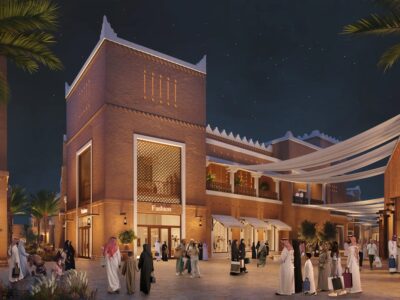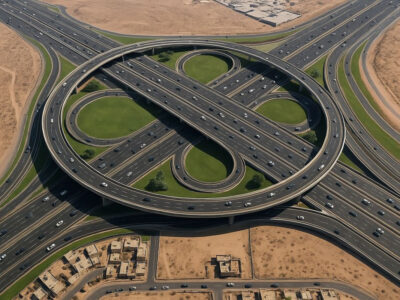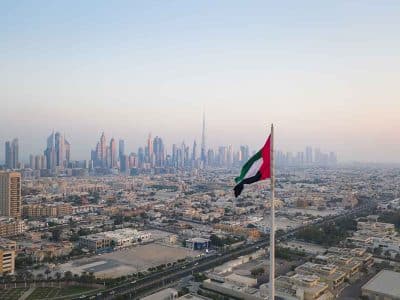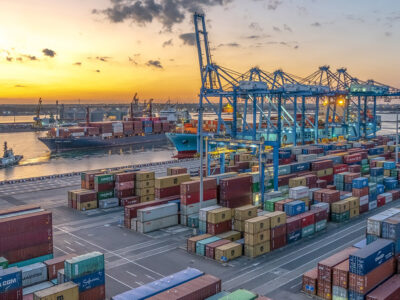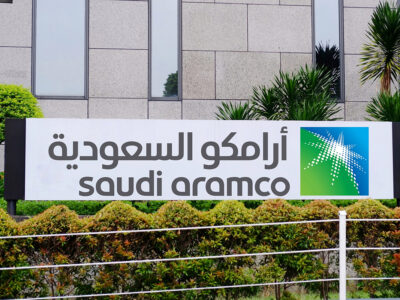The launch of Dubai Metro could herald a new era for the city as it develops around a new mode of transport.
Dubai is at a critical moment in its history as far as urban planning is concerned. Over the long term the city’s population is expected to grow larger, as well as be boosted by a seasonal tourist influx.
As Dubai strives to become a city greater than the sum of its parts one of the key issues for urban planners, is the movement of people in the city. Overlooking for a moment the many exciting developments in the works, one simple question remains: how will all these people get around in the greater Dubai? The road map
At a traffic conference a few years ago, Mattar Al Tayer, chairman of the board and executive director of the Roads & Transport Authority (RTA), outlined the measures that are being taken to create a ‘21st century state of the art transportation system’ for Dubai to cope with the increased demand.
“We are presently working on road projects with a total budget of US $2.5 billion,” he said. “To give you an example of the volume of work, we have increased the number of lanes across Dubai Creek from 19 in 2006 to 40 in 2007, and this will reach 100 in 2020.”
But, of course, as he went on to admit, creating extra roads will only go so far to solving Dubai’s traffic woes.
“Experience has taught us that building roads alone doesn’t solve congestion problems. Transport must be planned and operated as a complete system with integrated modes of transportation such as bus, rail and water transport,” he said.
In a further bid to encourage people to swap their cars for alternative methods of transport, the existing bus network is set to be extended to a total length of 3000km, and tram lines are also under study. Dubai’s marine network of water buses is also growing in strength.
These measures will be necessary. As soon as a city grows over a certain size and activity, it cannot be sustained by purely car based private transport. Experts put the crossover point at over a million. A natural progress in the cycle of a city’s growth is evolution.
Introducing extra transportation methods is clearly a good start, but the real challenge may prove to be convincing people to use them, especially during the hotter months in the year when people may be more reluctant to leave the air-conditioned comfort of their own cars.This is in fact one of the major challenges in creating an effective transport system, points out Professor Erik Ferguson, of the Institute of Urban Planning and Design at the American University of Sharjah. Short-term measures such as additional parking, for example, will help to alleviate the problem of heavy traffic, but over the longer term, these don’t really help in promoting other methods of transportation, he says.
“If you increase the parking supply in order to deal with this traffic problem, then you also make it more convenient for people to use their automobiles and less likely to switch to these new transit systems. So you are sort of stuck between a rock and a hard place. Do you maintain a tight supply of parking in order to make these new rail systems more attractive?” he asks.
Steps being taken by the authorities to encourage people to switch from private to public transport include installing air-conditioned bus shelters.
Shared responsibility
With the large-scale communities being created in Dubai, the responsibility to move people is no longer just that of the transport authorities, but also of the developers, and consequently, of the masterplanners.
Planning of urban spaces is now a shared responsibility.
One development approach that is starting to take off in the region is Transit-Oriented Development (TOD).
TOD is ‘the creation of compact, walkable communities centred around high quality transit systems, enabling a high quality lifestyle without complete dependence on a car for mobility. TOD is fairly well established in cities in Europe and North America, but it is a relatively new concept in the Gulf.
Dubai has the opportunity to take it to a larger scale because of the ability to execute projects more quickly, with capital investment.
A lot of new areas are being developed so the opportunities here for TOD are fairly large, but the authorities and developers need to understand and make conscious decisions to plan communities in that way.
Benefits of TOD are not merely limited to making a city less car-reliant and more walkable, but also help reduce pollution and energy usage, according to experts.
Whether TOD is adopted or not, as the pace of development in Dubai accelerates, the next few years look set to be critical in terms of the placement of different activities and connections between them.
The great planning challenge over the next decade or so will be uniting the individual elements of Dubai.
This is what will help it become a city greater than the sum of its parts.
